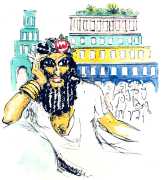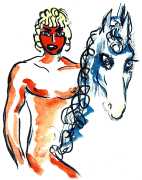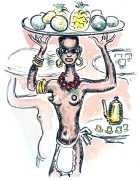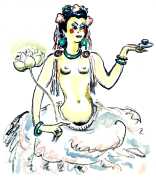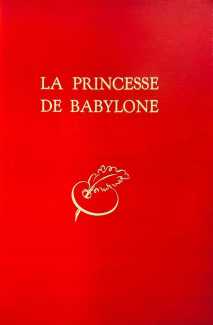 La princesse de Babylone (The Princess of Babylon) is a philosophical tale written by Voltaire in 1768, featuring two lovers – Amazan, a shepherd, and Formosante, the princess of Babylon. As in his more famous Candide, the separated lovers spend a long time searching for each other, and through their misadventures Voltaire conveys his ideas and criticism on religion, the human condition, and the society of his time.
La princesse de Babylone (The Princess of Babylon) is a philosophical tale written by Voltaire in 1768, featuring two lovers – Amazan, a shepherd, and Formosante, the princess of Babylon. As in his more famous Candide, the separated lovers spend a long time searching for each other, and through their misadventures Voltaire conveys his ideas and criticism on religion, the human condition, and the society of his time.
Formosante’s father wants to find her a husband worthy of her by launching a challenge. All the nobility of the time turn up at the palace – the Pharaoh of Egypt, the King of the Indies, the Great Khan of the Scythians, and the handsome stranger Amazan. Raised by shepherds, carried by unicorns and escorted by a phoenix, Amazan comes from the country of the Gangarides, a utopian land of justice, peace and equality. He falls madly in love with the princess, and the love at first sight is entirely mutual.
Learning of his father’s death, Amazan returns home, where a blackbird tells him that he saw Princess Formosante kissing the King of Egypt. In order to distract himself from his disappointment Amazan flees his homeland to travel the world. When Formosante learns of his departure and the reason for it, she also despairs, because kissing the King of Egypt was only to get rid of him. With the help of the resurrected phoenix, Formosante sets out in search of her beloved and travels all over Europe and Asia, observing customs, political regimes and religious practices. They finally meet again when Amazan saves Formosante from the clutches of the Spanish Inquisition.
The van Dongen-illustrated edition of La princesse de Babylone was published by the Paris publisher Gallimard, in a limited numbered edition of 186 copies, prepared by Doctor A. Roudinesco ‘pour le groupe de bibliophiles et d'amateurs d’art Scripta et Picta’ (for the group of bibliophiles and art lovers Scripta and Picta).





